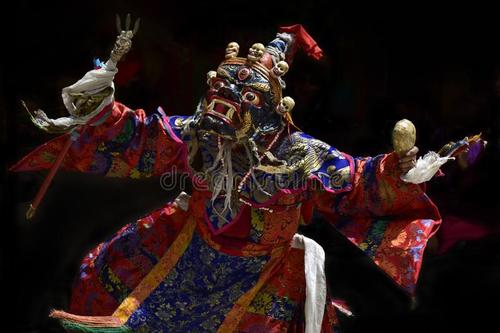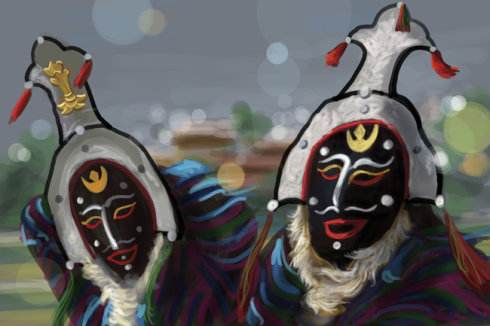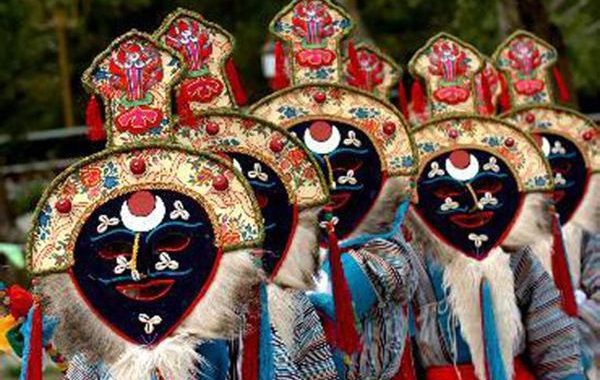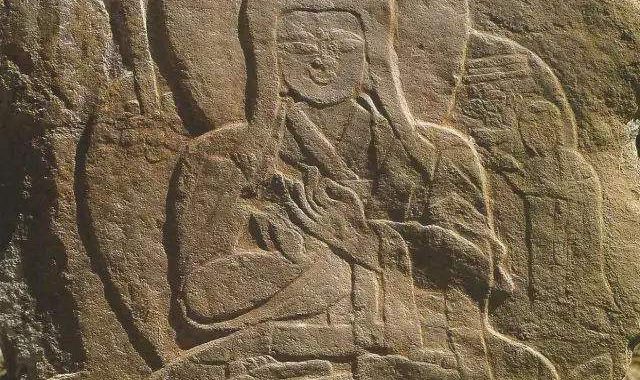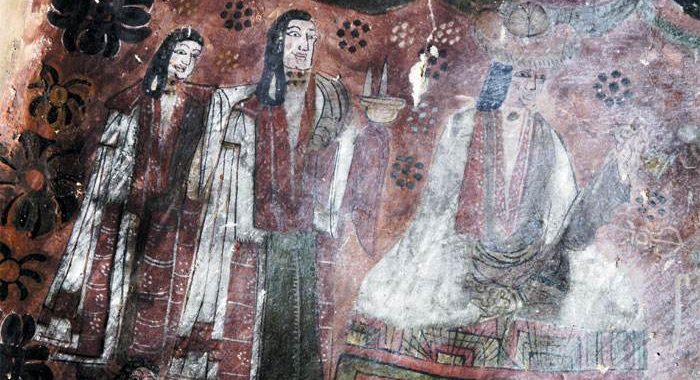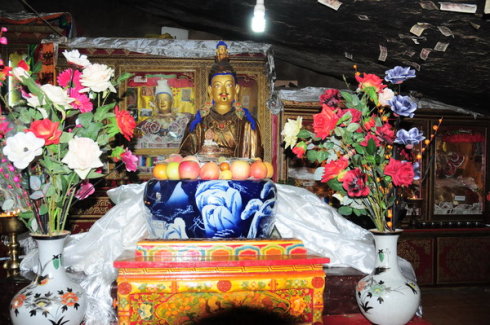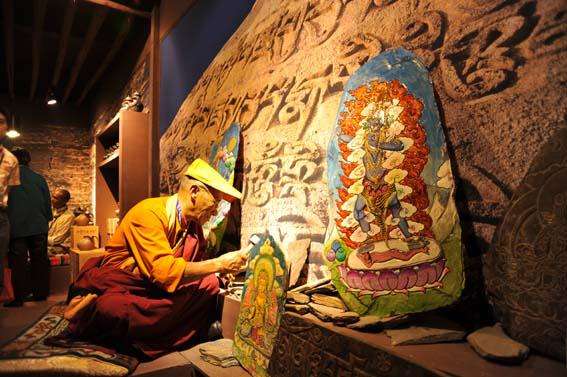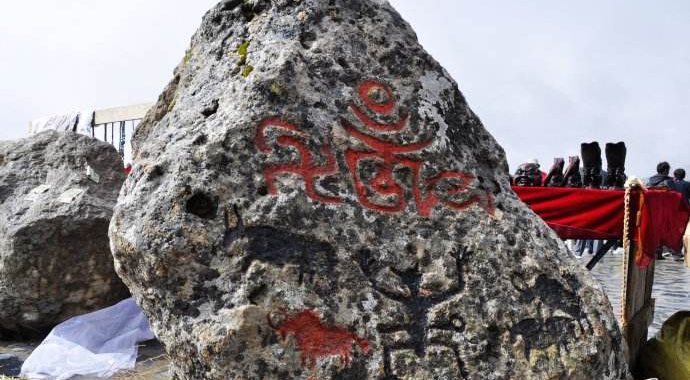Appearance of totemic animal-simulating masks
2 min readThe prototypes of Tibetan masks first appeared 3,500-3,750 years ago(equivalent to the late period of the Xia Dynasty in the Central Plains).Among the two pieces of pottery unearthed in the Lhasa Neolithic Culture Qugong Site, there are two pottery sculptures-the monkey face decoration on the pottery,a relief sculpture; and the bird head on the vessel lid,a stereoscopic carving. The bird’s head slightly resembles a vulture. Monkeys and vultures are Tibetan totems, and totem worship is one of the origins of the Tibetan masks. In the first group of the Renmudong Rock Art Site in Rutog County, four dancers wearing birdlike masks are at the center of “Dancing Sacrifice Picture,”which should be regarded as a grand Bon religious praying ceremony in a tribe long ago.
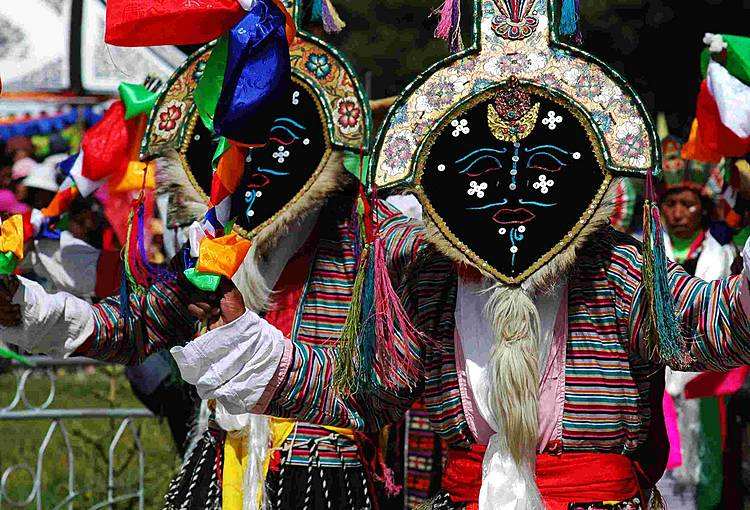
Legend has it that Yidam of the Wrathful Protector used all sorts ofdivine power and magical arts to compete with Rakshasa Raja, in which there was some ritual dance arranged by eight kinds of paces and variousapproaches, later known as “Vcham.”It is said that Yidam also passed this exorcism dance to Sangwadingba, who passed it to the gurus of the first Tsenpo of Tubo Kingdom, Namkha longwadorje and Sempa Namkha.
When Nyatri Tsenpo built the Yumbulagang Palace, Namkha longwadorje held grand ritual activities to tame the earth ghost. The early Tibetan primitive totem worship dance with animal-simulating masks is stillpopular among Baima Tibetan people in Pingwu County, Aba Prefecture, Sichuan. The ancient dance form called “Cuo”was used to offer sacrifice to the mountain god seeking blessing for the harvest with masks that had images of lions, dragons, tigers, leopards, vultures, pigs, cattle, sheep and others.
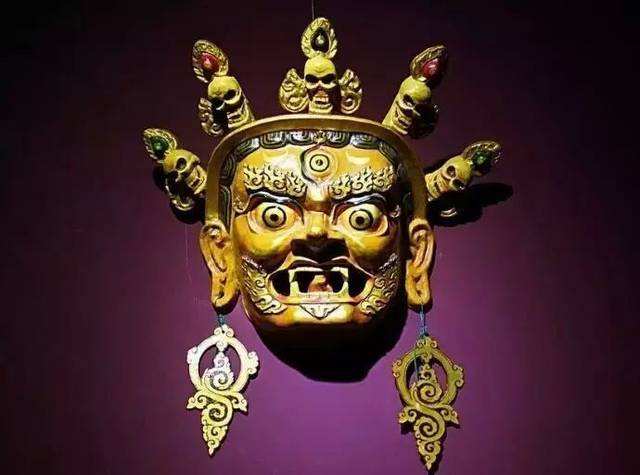
It is recorded that after Songtsen Gampo announced the “Ten Virtues Code,”the whole nation was jubilant. People sang and danced in celebration of royal family and ministers “playing the roles of rhinoceros or ligers,”which apparently referred to the performance by people wearing masks. At the ceremony for the inauguration of the Samye Monastery,”people play cows, tigers, and lions, wearing masks to dance happily.”From these records it can be seen that among various kinds of folk art performances during the early days in the Tubo Kingdom, there were a lot of songs and dances with animal-simulating totem masks.
